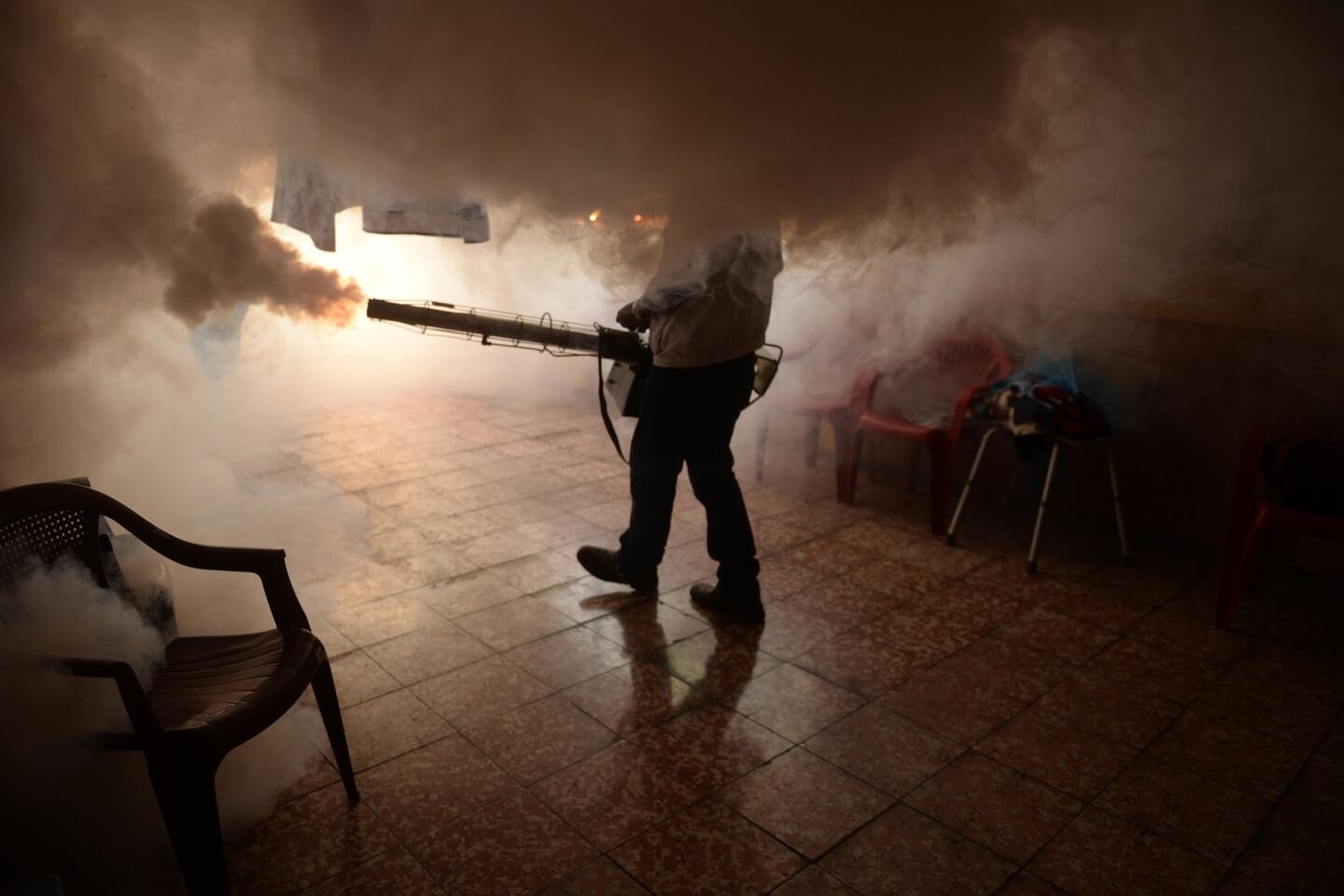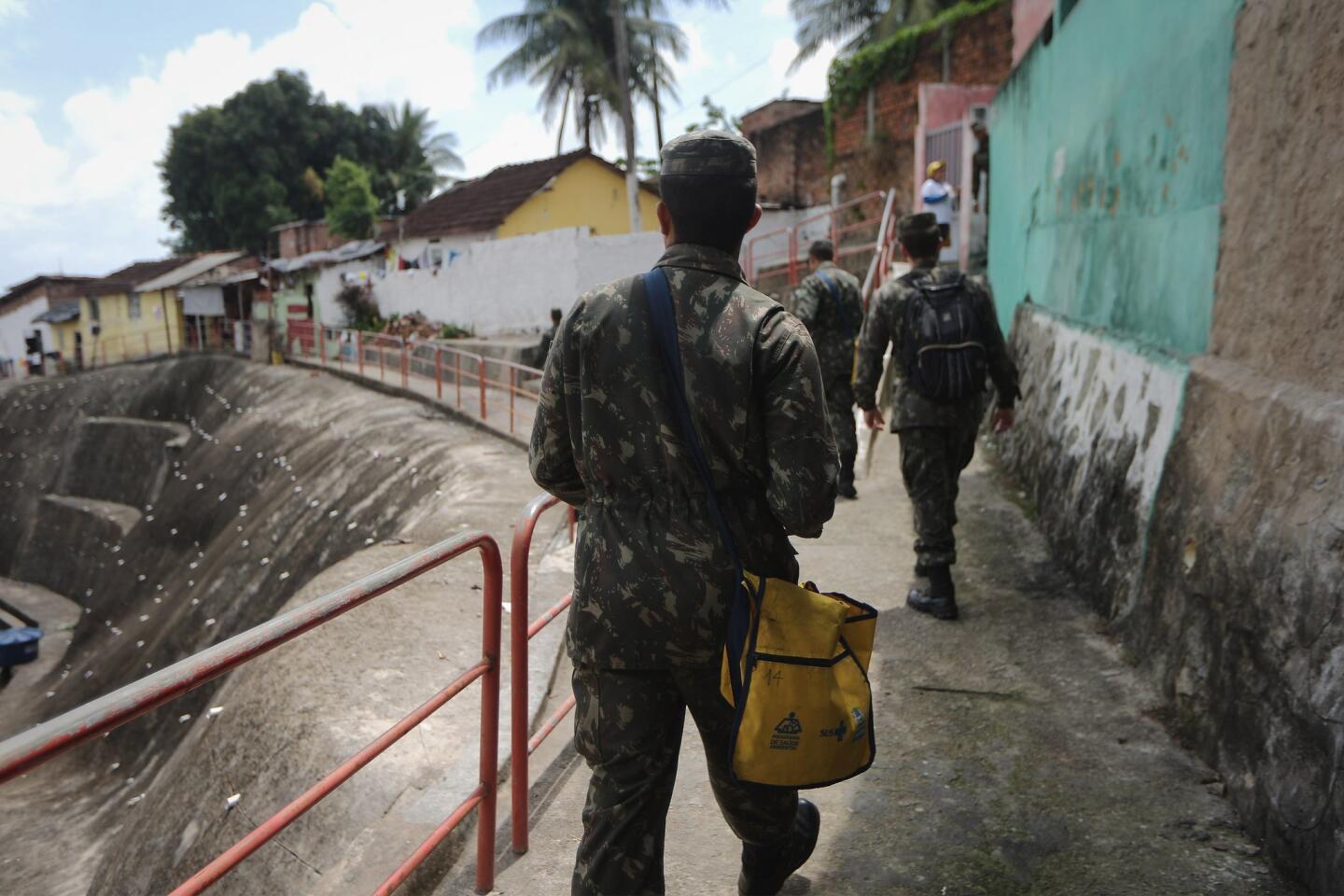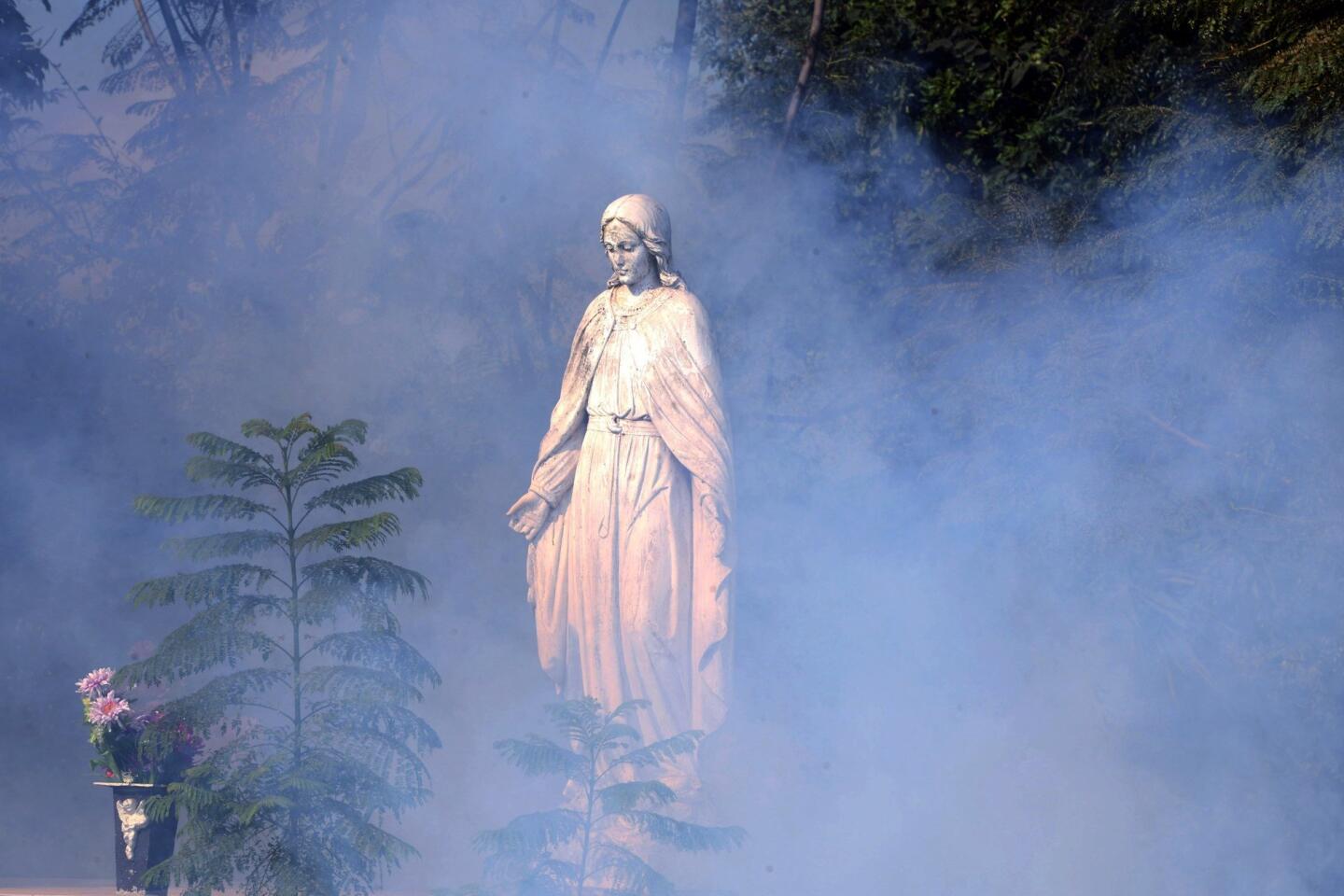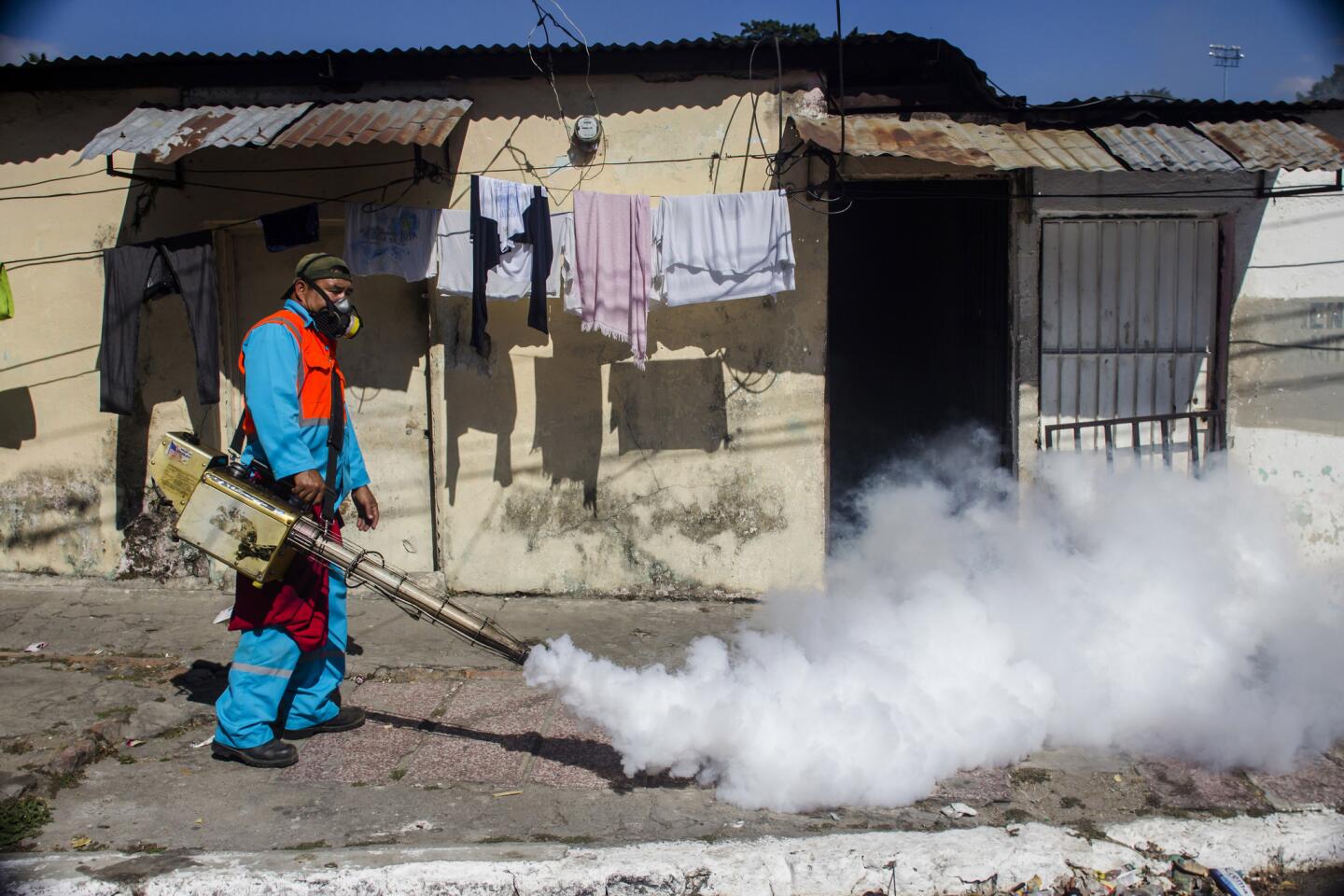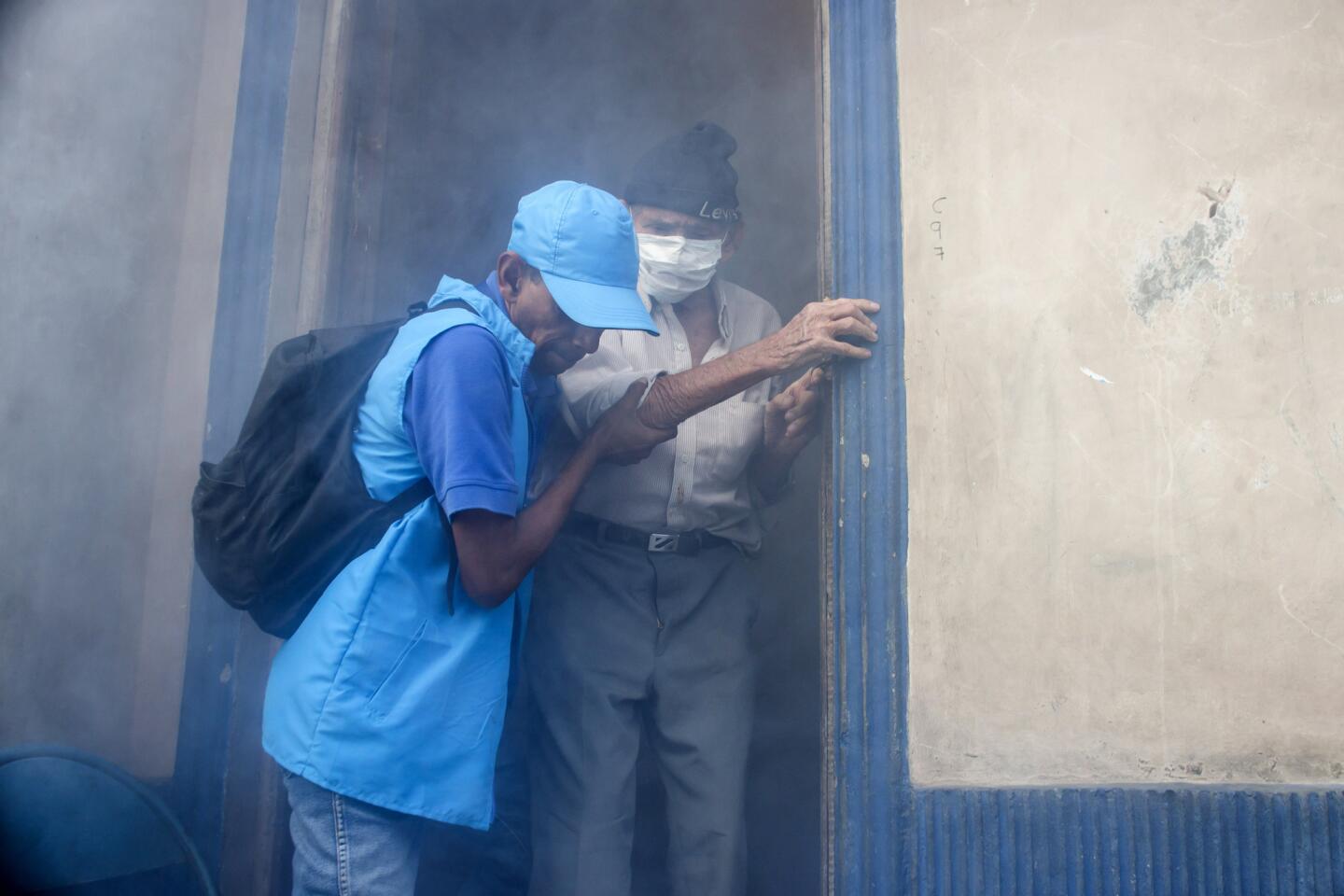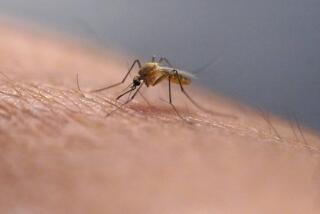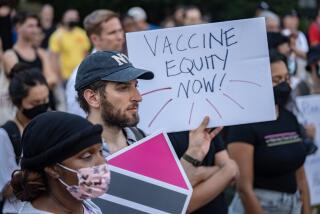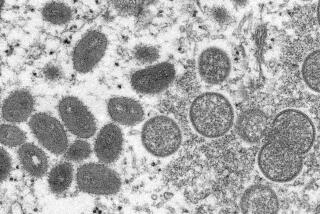Zika ‘spreading explosively’ in the Americas: What you need to know
- Share via
Declaring a threat of “alarming proportions,” the head of the World Health Organization warned Thursday that the Zika virus is “spreading explosively” across the Americas and could infect as many as 4 million people.
Dr. Margaret Chan told the agency’s executive board in Geneva that Zika has been linked in some places to an increase in the number of babies born with abnormally small heads and cases of Guillain-Barre syndrome, which can cause temporary paralysis.
Although there is no definitive proof that Zika is the cause, Chan said, “the possible links, only recently suspected, have rapidly changed the risk profile of Zika from a mild threat to one of alarming proportions.”
Her agency plans to convene a meeting of independent experts Monday to decide whether the Zika outbreak should be declared an international health emergency.
The last time such an emergency was declared was for the Ebola outbreak in West Africa.
The agency, which is part of the United Nations, was criticized for its slow response to that outbreak, a mistake it does not want to repeat. Ebola had already killed more than 1,000 people by the time the agency sounded the alarm in August 2014. The virus has now sickened more than 26,000 people and killed at least 11,316.
What is Zika?
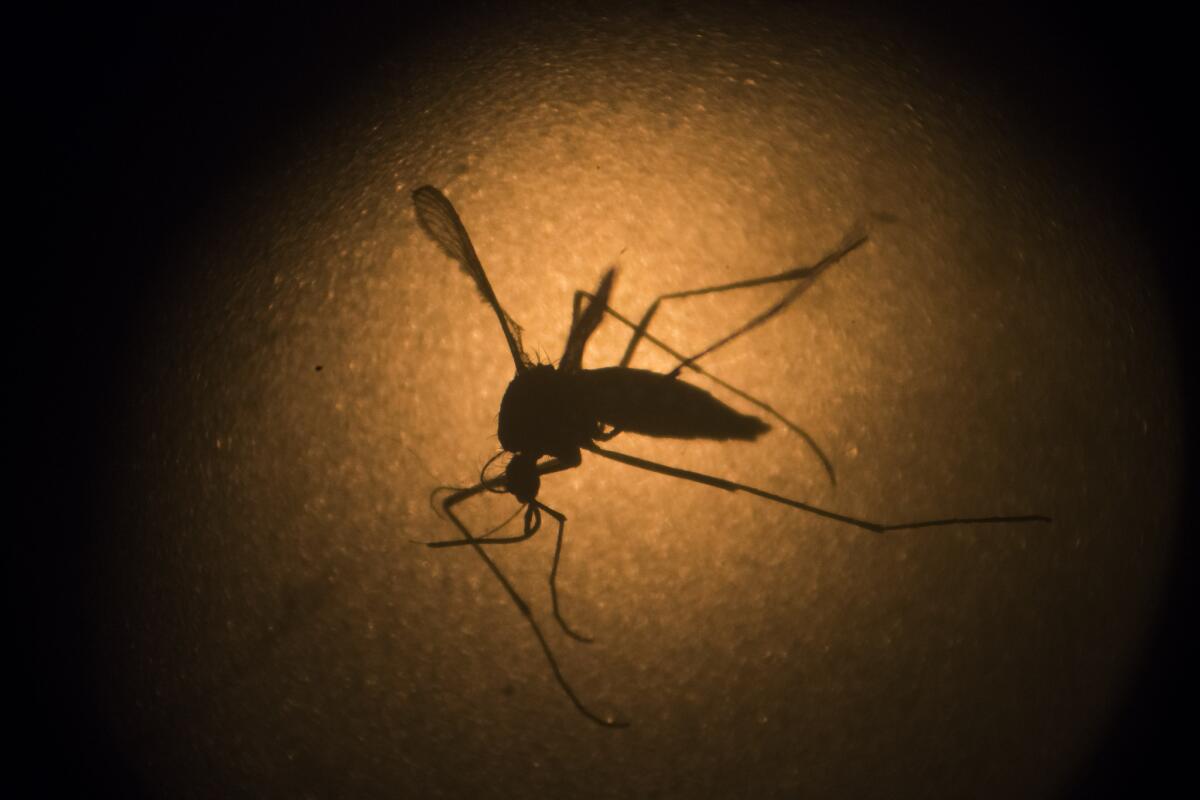
An Aedes aegypti mosquito is photographed through a microscope at the Fiocruz institute in Recife, Brazil.
Zika is a virus transmitted primarily through the bite of an infected Aedes mosquito, a species that also spreads dengue and yellow fever. It takes its name from the Zika forest in Uganda, where it was first isolated from a monkey in 1947.
The disease is common in parts of equatorial Africa and Southeast Asia. Outbreaks have also been reported in the Pacific islands. But the disease did not begin to spread widely in the Americas until May, when an outbreak was reported in Brazil. Cases have been reported in 23 countries and territories in the region, Chan said.
Why am I only hearing about it now?
According to the U.S. Centers for Disease Control and Prevention, only about 1 in 5 people infected with the Zika virus fall ill, and the symptoms are usually mild: fever, rash, joint pain and red eyes.
The arrival of the virus in Brazil, however, coincided with a sharp increase in a condition known as microcephaly — an unusually small head size and brain damage — in newborns.
Although there are a number of possible causes, including exposure to certain chemicals, bacteria and radiation, the correlation with Zika has been sufficiently high to raise alarm. El Salvador advised its population to put off having children for two years.
How did it get here?
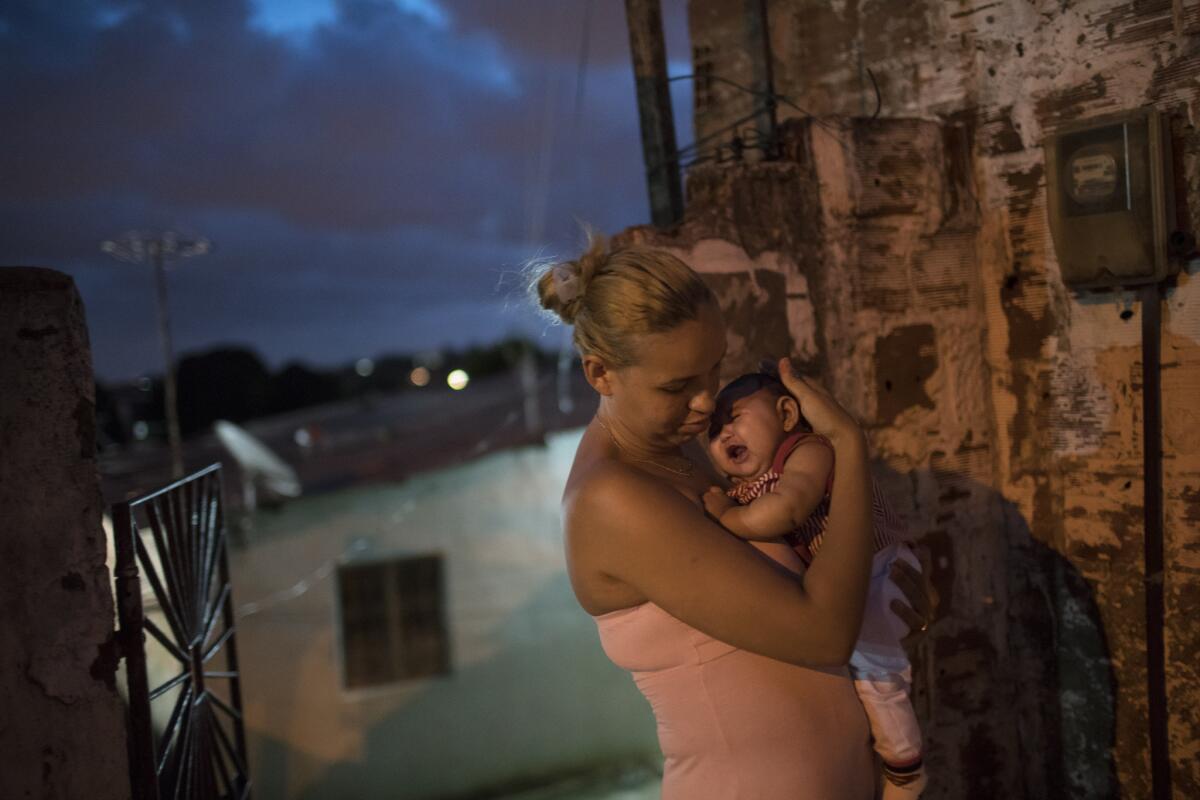
Gleyse Kelly da Silva holds her daughter, Maria Giovanna, who was born with microcephaly, outside their house in Recife, Brazil. Brazilian officials believe there’s a sharp increase in cases of microcephaly and strongly suspect the Zika virus.
That’s unclear. One theory is that the virus entered Brazil around the time of the 2014 World Cup soccer tournament, when hundreds of thousands of people were visiting from around the globe. Some experts have also suggested that El Niño weather patterns, which are expected to significantly increase mosquito populations in many areas, could be playing a role.
Why is the virus spreading so quickly?
There has been little previous exposure to Zika in the Americas, so people lack immunity. It is also spread by a type of mosquito that is present throughout the region, except for Canada and continental Chile.
Is the United States at risk?
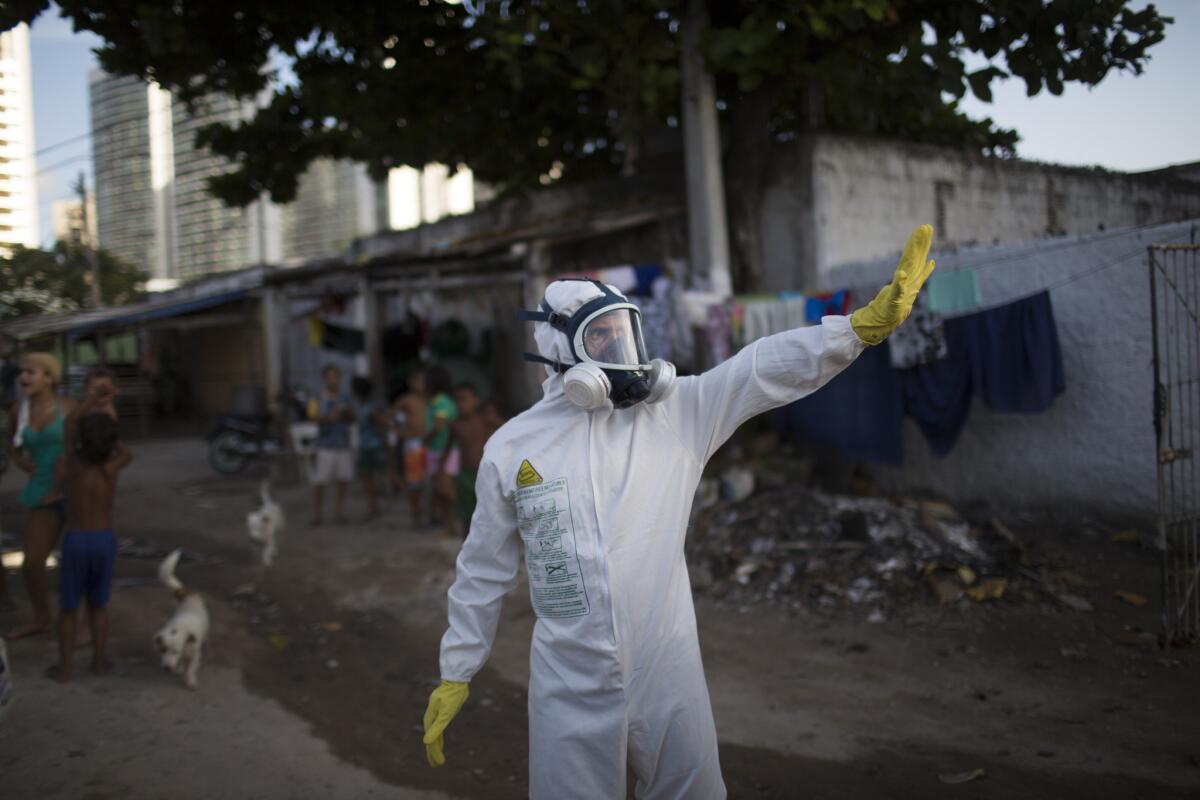
A municipal worker gestures during an operation in Recife, Brazil, to combat mosquitoes that transmit the Zika virus.
The only cases diagnosed in the U.S. so far involve people who traveled to countries where Zika is spreading and presumably contracted it there.
However, the WHO says transmission will probably spread to all the countries and territories in the region where Aedes mosquitoes are found, including the U.S. mainland.
The CDC says it has been aware of the threat for some time and has been taking steps to limit any possible spread. That includes alerting healthcare providers and the public about the virus and providing state laboratories with diagnostic tests.
Besides mosquito bites, are there other ways to catch Zika?
Although the role of Aedes mosquitoes is well documented, the evidence about other transmission routes is limited.
Scientists say the virus can be transmitted from a mother to her baby during pregnancy or around the time of birth, but there is currently no evidence to suggest that it can be spread through breast milk.
The virus has also been isolated in semen, but scientists say more research is needed to confirm whether it can be spread through sexual contact.
There has been a report of possible spread through blood transfusion. But this is thought to be an infrequent means of transmission.
How can people protect themselves?
There is no vaccine or cure for the Zika virus, but there are steps that people can take to reduce the risk of infection:
- The WHO and CDC recommend reducing mosquito populations by eliminating breeding sites, especially in and around the places where people live. Containers that can hold even small amounts of water -- buckets, flower pots, tires -- should be emptied, cleaned or covered to prevent mosquitoes from breeding in them. Another option is to treat standing water with larvicide.
- Those living in or visiting Zika-affected areas are being urged to protect themselves from mosquito bites by using insect repellent; wearing clothes (preferably light-colored) that cover as much of the body as possible; closing doors and windows, or using screens to keep out the insects; and sleeping under insecticide-treated bed nets, especially during the day when Aedes mosquitoes are most active.
- Pregnant women need to be especially careful to avoid mosquito bites. Women planning to travel to areas where Zika is circulating are being urged to consult a healthcare provider before leaving and upon return. If they believe they have been exposed to the virus, they should consult with their healthcare provider for close monitoring of their pregnancy, authorities say.
For more international news, follow @alexzavis on Twitter
ALSO
What sweat can tell you about your health
Geneticists uncover a key clue to schizophrenia
Rapper B.o.B. says the Earth is flat; Neil deGrasse Tyson drops diss track in response
